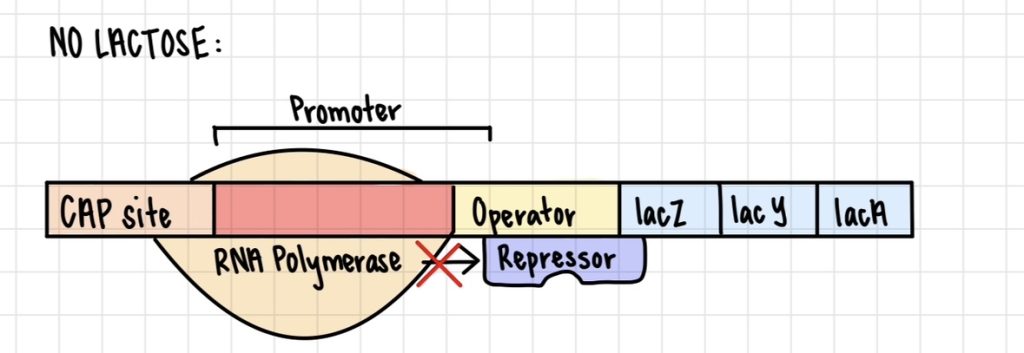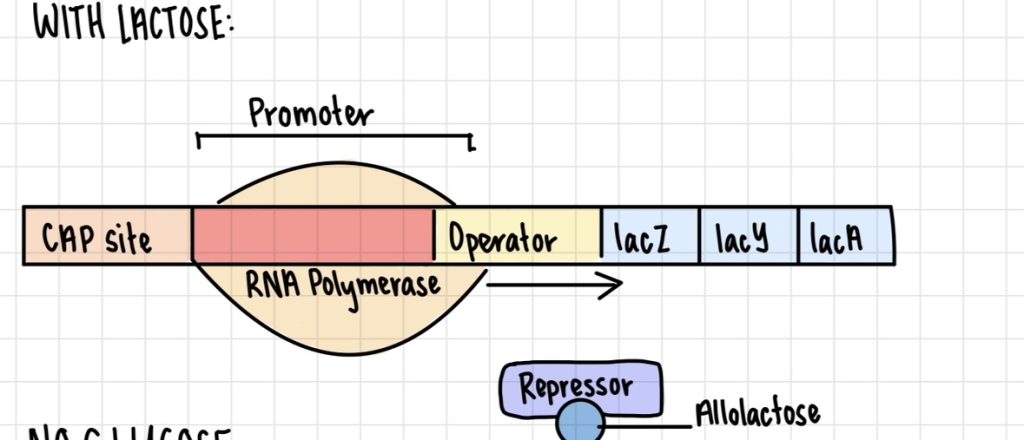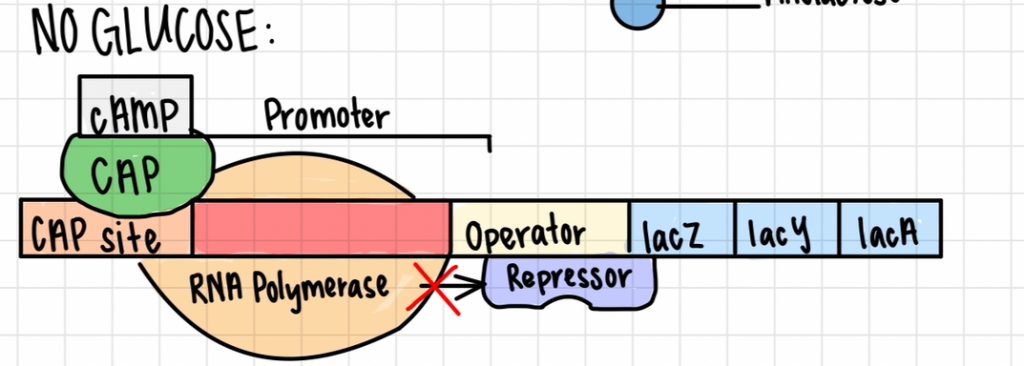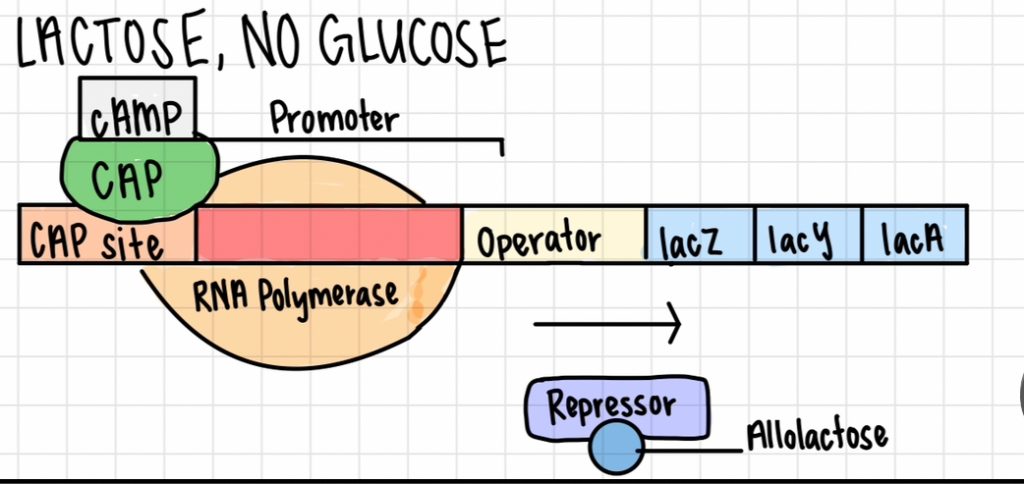1. In the absence of lactose:
When lactose is unavailable, repression of the lac operon occurs. This repression is initiated by the binding of the lac repressor to the operator. This binding effectively inhibits transcription by RNA polymerase.

2. In the presence of lactose:
In the presence of lactose, it serves as an inducer for the lac operon. An inducer is a small molecule that initiates gene expression or operon activity. In this scenario, allolactose binds to the lac repressor, inducing a change that disrupts its DNA-binding ability. As a result, the repressor dissociates from the operator, allowing RNA polymerase to transcribe the operon.

3. In the absence of glucose:
In the absence of glucose, the lac operon undergoes upregulation. Glucose serves as a primary carbon source for E. coli, leading to high levels of cyclic AMP (cAMP), which in turn activate the catabolite activator protein (CAP). Activated CAP then binds to the CAP binding site near the promoter region.
Without lactose (as illustrated below), the lac repressor binds to the operator, hindering access to RNA polymerase and consequently preventing transcription. However, in the presence of lactose, RNA polymerase can effectively bind to the promoter, enhancing the rate of transcription.

4. In the absence of glucose and the presence of lactose:
In the absence of glucose and the presence of lactose, the lac operon undergoes strong transcription. This is initiated by the release of the lac repressor from the operator due to the presence of allolactose. Additionally, elevated levels of cyclic AMP (cAMP) resulting from the absence of glucose activate the catabolite activator protein (CAP), which binds to the DNA. Consequently, CAP facilitates the binding of RNA polymerase to the promoter, resulting in strong transcription of the lac operon.

5. Where does this regulation take place?
In studying the lac operon, it’s evident that its regulation primarily occurs during transcription initiation. Initially, the lac repressor protein binding to the operator region acts as a barrier, impeding RNA polymerase from accessing the promoter and thus suppressing gene expression. However, when lactose is present or glucose is absent, a shift occurs, activating the lac operon and leading to the release of the lac repressor from the operator. Additionally, the involvement of CAP binding to the CAP binding site serves to enhance RNA polymerase’s attraction to the promoter, ultimately promoting gene expression. This intricate interplay ensures the efficient regulation and expression of the lac operon, highlighting the sophisticated mechanisms by which cells adapt to their environment.

Leave a Reply